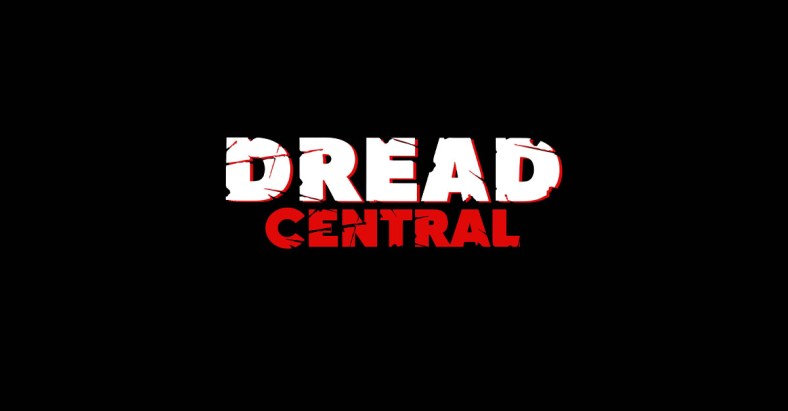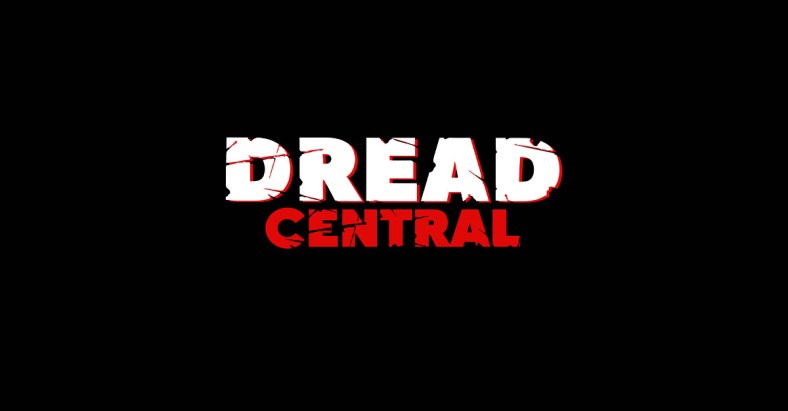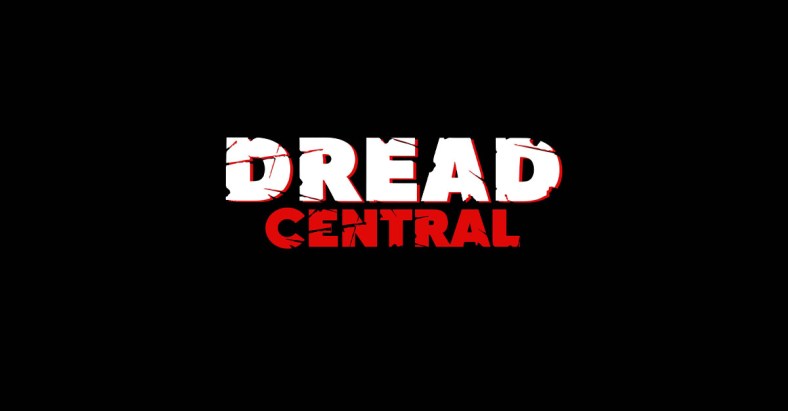#SDCC15: Joe Dante Takes Us Inside the Warner Archive; Gremlins 3 Update

The masterminds behind the Warner Archive Collection manufacturing on demand (MOD) initiatives have been steadily dropping classic and obscure horror films on us for about 6 years now. At this year’s Comic-Con we sat down with the three men behind this revolutionary process, George Feltenstein, Matthew Patterson, and DW Ferranti, along with horror maestro Joe Dante to talk horror and how they select the films to release under their often imitated MOD label.
“When it comes to selecting titles to release, it depends on a few things,” says Ferranti. “It’s a combination of the physical elements… the master… perceived market interest, what’s going on in our culture that could relate to it, and demand.”
Patterson chimes in, “One of the more interesting things we learned when we first started doing Warner Archives was that at first it was just going to be existing masters of classic films… you know, the kind of thing that Turner Classic Movies is known for showing. However, because some of the 70’s films were selling really well, and people starting snapping up these older TV movies, these factors kind of opened the door to where we are today… releasing classic TV shows, classic cartoons. Then because of that success, George was able to start getting funding to do remasters. The quality of our releases started going up, and thankfully fans started flocking. Now we do podcasts, go to events, are active on social media, etc. Getting people excited about these movies have been a key factor in our success.”

“We also have either three or four salt mines filled with original negatives and video tapes,” Patterson goes on. “The Warner Archive is actually the largest film collection in the world. It truly is like a real mine. You just keep going through it and working stuff out. The MOD initiative allows us to target even the smallest audience without much financial risk. Being that we’re the ones who are printing these movies to disc when they’re ordered, we don’t end up with 10,000 extra copies that no one wants.”
Another good thing about the Warner Archive Collection is that it stings the problem of film piracy directly at its core. DW elaborates further. “There was a perception among many in the industry that if stuff had been bootlegged and sold already, it just wasn’t worth putting out. However, we knew from personal experience that people are just buying the bootlegs because there’s no other way to get these movies. The people hunting these films down would MUCH RATHER own a better version of the film. If an official version of a movie comes out on disc that was previously only available via nefarious channels, 9 times out of 10 they would trash the bootleg for something better, and that’s what we offer.”
“I have been physically exploring our archives for about 15 to 20 years, looking at elements and masters, figuring out what generation they may be” said Feltenstein, a man who shows a lot of love and takes an equal amount of pride in his work. “Most marketing executives do not do that. It’s not technically my job to go looking for film elements, but I do. We started with 150 titles and now we’re over 2,200 and thankfully there isn’t an end in sight.”
At this point George had to be taken to another table, but in his stead we got the always wonderful Joe Dante.

“You know, there’s a lot of movies out there that have fallen through the cracks, if you will, and the Warner Archive have done an amazing job bringing them back to the market,” said Dante. “[They own] two thirds of the films out there… because they’ve acquired all these different libraries. And now they also offer streaming options. I don’t know about you, but that goes a long way in saving them space. But then there’s the Cloud thing. Everyone says, ‘Oh, it’s in the Cloud.’ I’m not so sure I buy into that! We should all just agree to never put anything important in the Cloud. I just don’t think it’ll be around forever! I saw The Crawling Eye! I know what could happen,” Dante says with a laugh.
Speaking of horror films, Warner has a LOT of Hammer films on their way to Blu-ray. “There’s only one problem with Hammer; the rights to those movies are scattered all over the place so I don’t think we’ll ever see a complete collection of them Stateside. The ones that were released by Fox were 7 Arts, and 7 Arts is owned by Warner, so they got those back. But there’s also a lot of Universal Hammer films as well as several owned by Columbia and some MGM releases that are just never gonna go to the Warner Archive, BUT thankfully Warner does own a BUNCH of them. I’m extremely thankful for what they’ve got though, and as you see, they do a tremendous job on what they release. These guys,” referring to George, Matt, and DW… It’s like they’re this little guerilla unit… they’ve done a remarkable job of bringing these movies, some of which haven’t been seen in 70 years, back to the public. What’s interesting is that after they became successful, other companies like MGM, etc., started to put out their own version of the Warner Archive, but they quickly discovered that they really didn’t know how to do it as well. As a result, a lot of those movies are now distributed by Warner Archive even though they’re not Warner pictures. That’s really telling.”
Dante continues, “I was lucky enough to see some of these Hammer films when they were new and in the theater. I mean, Curse of Frankenstein! Man, I remember not being able to sleep for WEEKS after seeing that picture. What’s remarkable to me is that, back then… if you tried to make a period horror film today, with waistcoats and petticoats, horses and carriages, nobody would buy it! Kids would wouldn’t sit still for it, but WE for some reason… man, we thought it was GREAT! It didn’t bother us at all. Horror of Dracula though… that was the movie that truly gave Hammer their direction. Here was a company at that time that really wasn’t sure which direction that they wanted to go in. They decided, this was the kind of movies that they wanted to make, so they made a deal with Universal to go through the vault and make color versions of their classic monster movies. Until Hammer horror movies were very resistant to showing blood… or showing any kind of cleavage. I mean, no vampires had fangs until Christopher Lee. That was a big change and a change that defined horror in the Sixties. Soon afterwards the Italians saw that and they started – THANKFULLY – making horror pictures and that’s how we got directors like Mario Bava. It was a really great time to be a kid because all of these movies were coming out.”
“I cannot tell you how many times I would frequent the worst theatets in town just because they were the only ones playing these movies. I remember going to 42nd Street and just missed getting peed on from the balcony. There was a theater in Philadelphia called ‘The Family Theatre.’ They were open 24 hours a day and were constantly running movies. Literally no matter what happened, they would continue running the pictures. So I was there watching a movie called The Whip and the Body, a Bava picture starring Christopher Lee. It had a scene in which Lee was just whipping this girl and some guy got so excited watching the picture that he stabbed the guy in the next seat over to him. So yeah, there was like a murder… in the theater. As you would expect, it was pandemonium and the police came, but no lights ever went on in that theater and the film never stopped running. I simply just moved to another seat because if I didn’t see this picture here, I was never going to see it. That’s what you had to do back then!”
Thankfully times have changed. For better or worse. One thing that’s changed in moviemaking is the usage of CGI. Dante chimed in regarding this contemporary technology. “I have nothing against CGI; in fact I think it’s a great tool. I do, however, still like the old ways. I think they’re still interesting. If I had had CGI when I made Gremlins, it would be a better picture. I mean, I would still use the puppets, but the puppeteers could be standing right next to them instead of hiding below or behind furnishings like lamps. There were all these complications using long rods that aren’t quite as good unless you’re using them up close. I would have put the puppeteers in the shot, then done another pass and taken them out. I think the acting would be better by the puppets! CGI is in every movie, and people just don’t realize it sometimes. It’s used for backdrops and skies, you name it.”
Speaking of Gremlins, what about a new film…
“You know, I’m the wrong guy to ask,” Dante explained. “It’s not my project; it’s owned by other people, and they’re gonna do whatever they’re gonna do with it. There’s been talk about it for a while now, but we keep hearing this, this, and that, but then nothing ever becomes of it. I honestly just don’t know.”
This interview is dedicated to the memory and career of actor Allen Jenkins, whom DW is trying desperately to share with the world via his films in the Warner Archive. Did you really think I’d forget, DW?
Pro Tip: Order a copy of Sh! The Octopus available here in a Horror/Mystery Double Features collection. It will change your life.

Categorized:News

